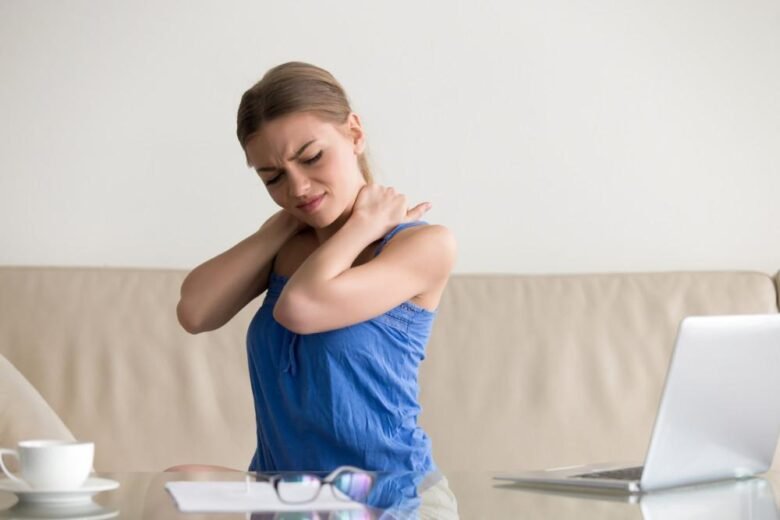Chronic pain can be described as an invisible burden that makes it difficult for the sufferers to manage their everyday activities. Many women know this feeling much in the same way as men. These disturbances can present themselves as widespread pain syndromes or arthritis; chronic pain may be an unbidden presence that intrudes into not only physical but psychological spheres as well.
For some, the process of learning to manage chronic pain may seem overwhelming, to say the least. I wish to say none of this pain management is for women alone, as with the right education and materials women can reclaim their lives. The first step is recognizing the true definition of chronic pain and finding solutions that address specific needs. Well, let’s move on to a discussion of some of the practical and lifestyle recommendations aimed at enhanced self-management for people with chronic pain. You should not have to suffer through this difficulty because there are effective strategies that will provide relief in the future.
What Is Chronic Pain?
Chronic pain is not a form of distress; it is a condition in and of itself most of the time lasting even months if not years. Acute pain is not the same as chronic pain; it is clinical pain that acts as a warning for some injury or illness, while chronic pain may outlast the time frame in which its reason has ended. Such pain can be caused by several factors, such as trauma, disease, or damaged nerves, and most of the time results in a combination of functional and emotional consequences.
Let us become well aware of the intricacies of chronification. A universal trait, however, is that each person suffering chronic pain will have an experience unique to them. Such factors will include, but not be limited to genetics, lifestyle, or even mental stability. Considering that all these issues are intimately interspersed here, it’s important to stress how far proper management of stress and pain perception is possible in a particular patient. One of the possible ways in this direction is to recognize that chronic pain is neither purely somatic nor of exclusively mental origin, and one can find the ways of encumbered people’s satisfaction via chronic pain management that are complex.
Causes of Chronic Pain in Women:
Chronic pain managers have an international feel to them ladies; they form a very large percentage of users all over the world suffering from an array of different diseases. One such condition is endometriosis, which is characterized by the presence of endometrial glands outside of the uterine cavity, often affecting the ovaries, resulting in pain and inflammation of the pelvic area.
Fibromyalgia, on the other hand, is another form of chronic pain that is prevalent in women more than in men and is concerned with the spine and musculoskeletal structures with a range of symptoms that include tenderness and dry muscle in specific spots.
Arthritis, osteoarthritis, and rheumatoid arthritis are interrelated and have today emerged as common forms of chronic pain affecting many women. Joint pain is the most common disorder, though the disease can infiltrate into tissues that surround the joint.
It is now common knowledge that migraines are not common standard headaches for women across the globe; they can develop into painful eruptions that are far worse than any other headaches. It has been observed that such women tend to experience such pains during their menstrual cycles or any hormonal changes.
Chronic Pain: Damaged Nerves, Bones, Joints, or Optimal Pain Control
Traditional chronic pain treatment begins with medication, NSAIDs, or opioids, for example. These drugs have their side effects, so they can dull pain temporarily but not without plenty of dangers. There’s also physical therapy—a common choice that improves mobility and endurance with carefully chosen movements.
There are cases where pain nerve blocks lead to injections that target the problem areas by turning pain sources off. This brings a lot of us temporary comfort, but surgical choices should be the last option when many other possibilities have had little to no success. It needs to be emphasized that what worked great in general for some women may or may not work for others, and seeking options out loud with our healthcare providers is an important decision in addressing treatment that is tailored to your individual needs.
Alternative and Complementary Therapies:
A new way of looking at chronic pain can be provided by alternative and complementary therapies. Most of the time, they are aimed at addressing the whole person and not only the symptoms.
- Acupuncture is one such therapy that many women find helpful. By inserting fine needles into specific points, it may help alleviate discomfort and restore balance in the body.
- Another option is massage therapy. It promotes relaxation while also working on the areas of tightness, which are some of the factors responsible for the pain.
- Herbal remedies are equally on the increase. Many of these herbal ingredients are believed to help ease chronic pain when taken regularly, for instance, turmeric and ginger, which are said to be anti-inflammatory agents.
- Apart from the physical aspect, yoga, and mindfulness-based practices entail movements, but they are also cognitively engaging. They help in creating a strong bond between these two parts, which can assist people who are suffering from chronic pain.
Searching for these options may help increase avenues of obtaining relief and improve the quality of life in combination with conventional methods.
Lifestyle Changes to Manage Chronic Pain:
- Small lifestyle changes can have a great contribution to the control of chronic pain. Commence with a reasonable amount of activity that is geared towards the targets set. Such low-intensity activities as brisk walking, swimming, and yoga can also aid with increased flexibility and joint stiffness.
- There is still an important component that has to do with nutrition, and that is also nutrition and diet. A balanced diet that includes anti-inflammatory products like fruits, vegetables, whole grains, and healthy fats can reduce pain. Fluid intake also contributes to body functions as well.
- Sleep is usually neglected but is also important in neuropathic pain relief. Getting a relaxing bedtime routine can help improve the duration and quality of sleep.
- Meditation and deep breathing are mindfulness techniques that can be helpful in stress management, especially when the stressful factors in a situation become tolerable and manageable. Finding caring friends or a group’s support can be helpful as well.
These changes, if made in some gradual manner, also increase tolerance for chronic pain disorders and improve the general wellness of individuals.
Mental Health and Chronic Pain: Importance on Both Sides
Chronic pain seems to coexist with depression. It makes pain worse or potentially leads to more suffering. If you’re like most people with chronic pain problems who don’t get treatment, there’ll be dozens of episodes of frustration and sadness followed by anxiety because of ongoing pain. Women are more likely to report depression or chronic pain such as contact headaches or anxiety in females as well. That isn’t by chance; one reason leads to the other. Pain is persistent and interferes with daily activities, while negative feelings about oneself push one’s propensity to feel pain excessively.
About these two interdependent dimensions, there has to be effective management. Body-oriented treatment approaches ignore the fact that mental factors may be central to the patient’s condition. Here, the integration of mental health into treatment plans helps women’s coping strategies. Mindfulness interventions as well as CBT have a special role in this context. These techniques help cope with dysfunctional cognitive schemas and protect the individual from the negative effects of pain. Integrating mental health care into treatment fosters an integrative approach to recovery and improvement in overall wellness.
Conclusion:
Looking after chronic pain can, at times, be an incredibly challenging and lengthy process, more so for women. It is essential to get the right ratio between treating pain, other areas of functionality, and treatment. Pain is subjective; therefore, brings into focus the importance of individual approaches. Learning to listen to the body and going with the changes can lead to better outcomes. Pain, of course, is chronic but it can be managed with help. Whether those are colleagues, family, or community members, they provide the necessary support to be able to conquer pain.
It is crucial to note that asking for assistance does not equate to showing weakness. Rather, it shows that you are making progress towards self-sustenance. Combining traditional and alternative therapies is beneficial too, as it opens up different avenues of healing. Sure, the winds may be precarious at times, but as they say, every little piece is crucial in the fight against chronic pain. Women in this case, in sheer tenacity and sensibility, can rise to the challenge.
FAQs:
1. How long does pain have to last to be classified as chronic?
The term chronic pain refers to pain that lasts for three months or even longer. Chronic pain can occur anywhere in the body and despite best efforts from the physician, it might remain there.
2. Is there any treatment that is specially designed for women?
Yes, because some therapies may be more effective in women than men due to hormonal differences. Women benefit from hormone therapy or medications that are specifically designed for their body.
3. What role does diet play when it comes to chronic pain?
There is considerable evidence backing the claim that diet indeed matters when it comes to the level of inflammation within the body. A combination of omega-3 fatty acids, antioxidants, and whole grains may go a long way in alleviating pain.
4. Does chronic pain respond to exercise?
As it turns out, light activities such as yoga or swimming increase your range of movement and muscle strength without increasing the level of pain. Also, consistent exercise causes the release of endorphins, which are natural agents that help improve one’s mood and reduce pain.
5. Should mental health always be considered in the context of chronic pain conditions and their treatment?
Definitely. People with chronic pain are often anxious or depressed, and it’s a tough cycle to break. The mental component of chronic pain can be dealt with through counseling or support groups, and that can just add to the person’s general well-being while effectively dealing with the physical aspects.




